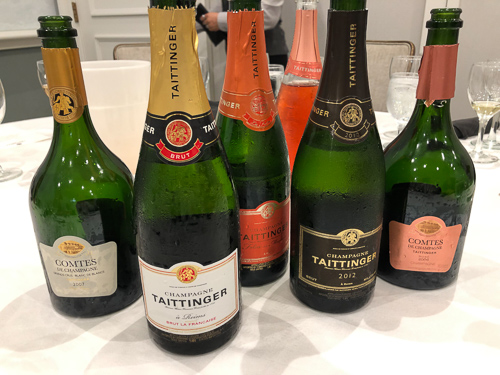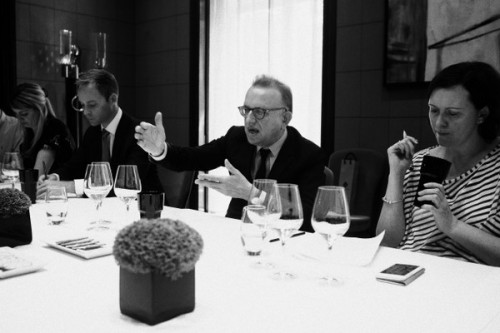
Richard Geoffroy introduces Dom Pérignon vintages 2003, 2006 and 2009, underlines why each is an extreme wine, tells us which is his favourite vintage ever, and explains why vision is more important than vineyards.
‘It has been such an exhilarating period,’ began Richard Geffroy, Chef de Cave of Dom Pérignon, referring to the string of releases that included 2002, 2003, 2004, 2005 and 2006. There will be no 2007 released, and he was in town to showcase the next vintage of Dom Pérignon, which will be 2009. ‘We are not declaring 2007 and we have decided to switch 2008 and 2009 around.
‘I’ve been critical in the past of those who have done this,’ he admits. ‘Sometimes I found it was more of a communication ploy than anything else. The truth is that 2008 is not ready. Not at all. It could be another 1996 in that sense. 2009 is approachable enough. Frankly, it would have benefitted from another couple of years, but all in all it is the best compromise we could come up with. 2007 is too slight – it has been considered, but in the end we found out that it didn’t have the substance or flesh. 2011 is another of the slight vintages where we can’t get a distinct DP character.’
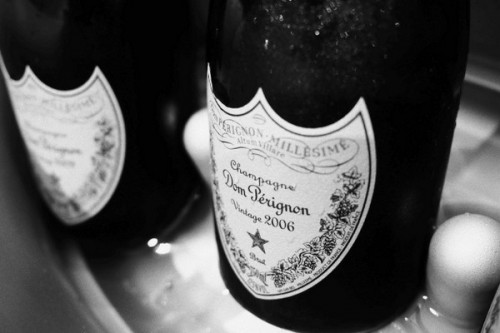
Of course, with Champagne, when you are using a distinctive bottle like that of Dom Pérignon, you have to decide at blending stage whether you are going to go ahead and make the wine.
‘When I joined Dom Pérignon in 1990 the vintage declarations were pretty conventional. It was about declaring in the best vintages only. Now I find that the vignerons and winemakers are meant to witness the Champagne years for what they are. It is an element of storytelling.’
2002, 2003, 2004, 2005 and 2006 were all declared. ‘These wines were awesome,’ says Geoffroy. ‘We had a responsibility to showcase them. All in all, looking at the first decade of the 2000s, the years were extravagant, sunny and generous (not in crop size), and the solar warmth translated into ripeness and richness. These wines are rich by all means, but the overall balance is definitely unconventional. 2003 is the least conventional Champagne profile of all. It is closer to a still wine than a Champagne. It is border territory for Dom Pérignon.’
2003
The surprise is that 2003 is Geoffroy’s favourite vintage of all. ‘2003 is the most extreme vintage I have been through in my 27 years of Dom Pérignon. It is not just scorching heat, but also heat on top of a small crop. In 2003 Chardonnay was 20 hl/ha. The heat caused photosynthesis to shut down in early August. At picking there was an element of dissociation between sugars, which had been stuck for a week, and phenolics and flavours which kept building up. Acids were dropping too, but this is the least of my concerns. I’m not after the sacrosanct acids: I take it as it is, low or high. The lowest acids were 2003 and 2009, and we had some success. Acids are part of the vintage character. It is not part of the Dom Pérignon style. I am not picking on pH.’
‘2003 was the mother of all solar years. It was the earliest harvest since 1822. To me, 2003 has been a seminal vintage for me. There is before and after 2003. I am known to make comparisons with collective sports. The sense of achievement in winemaking is so collective. It has been the most exilharating vintage to make because there were so many challenges. Luckily, we were able to take them one after the other, because they were staggered in time. If we had been facing them all together we would have failed. The most important thing was to be clear on our picking decisions, and to understand the photosynthesis shut down, and to pick one week earlier than anybody. Most people were monitoring ripening by the solar parameter of sugars. We had been measuring sugars alongside berry tasting and measuring phenolics. Combined together, we picked close to a week earlier than anyone else. When you start of with the right foot you only have to maintain the beat. There was a sense of collective achievement that helped the team grow up.’
‘Since then I have been on a mission to make a point with 2003. I’m pretty excited about this vintage. I’m often asked what my favourite vintage is in my 27 years at Dom Pérignon. My answer is not based on pedigree: it is based on the sense of satisfaction to really have taken the challenges and the doubts and all these emotions. 2003 is that for me.’
‘It is the vintage with the highest ever phenolics. People don’t realise it, but Champagne is higher in phenolics than you’d think, for good and bad. It depends on the vintage and the winemaker. If you cross phenolics and oxidative characters and it dries the wine out and makes it astringent. I am told this is a traditional character of Champagne, but I don’t like it. I want the glide! The continuous, simultaneous gliding holding the notes on and on, so that the finish isn’t depending on the physical astringency or the acids.’
‘These three wines are so low in acid. They are insanely low acids. Whenever I show them to my winemaker colleagues they are shocked. The low acids make up for the bitterness. There is good and bad bitter, combined with salinity and minerality, with a minimum of the reductive as well. The intriguing thing is that 2003 could have been really forward, extrovert fruit character – the tropical and exotic – yet it is all balanced out with intriguing dark reductive characters: not what you would expect from such a warm year. Welcome to Dom Pérignon!’
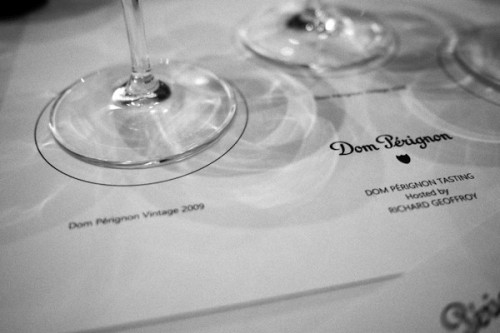
2006
2006 was an outlier year, and it made the least acidic Champagne ever. ‘The most challenging vintage of all from a technical viewpoint wasn’t 2003, but 2006. It was the most difficult blend to balance up. There was an issue with pH: it was the highest ever in the history of Champagne at 3.20. At the time of blending I had been making this wine with some symmetry: something very polished, almost too sleek, with a finish that wasn’t so defined. Rationally, it was rather foolish to go and declare it. We had been betting on the fact that in the long run of a lengthy yeast maturation the wine would emerge with a decent texture and precision, and a better finish. It materialized, but it kept me sleepless for a few nights. It took a long time to emerge, If I had released 2006 at the same age as 2003 at 8 years, I would have failed. We had the privilege of being able to release it at 10 years in the spring of 2016, and this helped a great deal.’
‘It has a striking bright, juicy dimension of fruit, like a bright light. There is less of a reductive mineral quality like in 2003. The centre of the wine is more fruit than anything.’
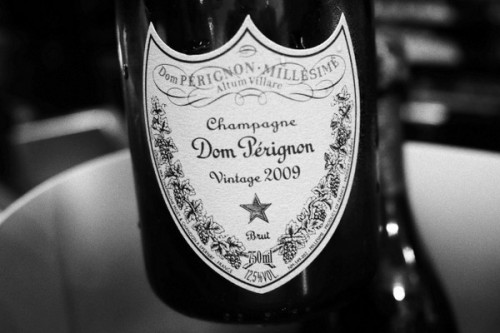
2009
2009 is the ripest vintage of all. ‘There are two things I could easily state about 2009. We have been going further with the ripeness of our fruit since we achieved our extra confidence in 2003. 2003 helped the project of 2009. We won’t be going any further with ripeness: it is pretty hard to go beyond 2009.’
‘The season started off so-so. There was mildew pressure. Then things cleared up and we had non-stop sun throughout August and September. The potential sugars were high. The fruit profile was super-ripe and Pinot Noirs were light coloured. It was a challenging year for red wines.’
‘There are various expressions of phenolics. In 2003, phenolics helped define the structure, whereas in 2006 and 2009 phenolics are more an element of texture.’
‘I am puzzled: some people are not declaring 2009. Why not? Is it a philosophical standpoint, or bookkeeping? My philosophy is that when you witness the year and you face an outstanding year, you take it. You never turn a good year down for the sake of accounting or to create artificial scarcity.’
‘In the late 1990s we worked hard with our in-house vineyard team to try to achieve extra ripeness and crop size and balance of vegetation and fruit load. We went through quite a few things but the truth is that most of it had been coming from mother nature. Many people complain now that Champagne has low acidity and blown out fruit characters. But one has to be consistent in the overall process. I am after more ripeness but my process is reductive. If you start crossing extra ripeness and oxidative winemaking, you are going to be in trouble. We have a coherent process from start to finish, and then the whole thing is completed with lengthy yeast maturation to bring layers of complexity, intensity and texture. From the viticulture side, our wines are all geared to that lengthy process of maturation.’
‘Some people were concerned with forward development in 2009s. Early on, I was concerned. Did we go too far? I am an anxious guy. It is very difficult for me to be at peace. Then I started looking at the wine on lees, and after 3 or 4 years ageing it was on the right track.’
He emphasised that the decision to switch 2009 and 2008 had to be made. ‘Trust me: 2008 is nowhere. It has been fantasized by so many people. I hope the wines will live up to this.’
‘Dom Pérignon is so much about a vision. Often, to be provocative, I say that the greatest asset of Dom Pérignon is not its vineyards but its vision. I put the vision above the vineyards. Once you are set on the vision you can venture out. It is like an itinerary for a journey. If you go out without the itinerary you get lost.’
Champagne Dom Pérignon 2009 France
Fine, expressive nose with some floral hints to the clean citrus fruit. There’s a sense of ripeness and weight on the palate with sweet pear, cherry and some nectarine, as well as a delicate citrus core. Linear and fresh with a smooth, saline core, and a tiny bit of grip from the phenolics. It’s ripe but not heavy, with precision and delicacy. A really pretty expression of DP that should develop in interesting ways. 93/100
Champagne Dom Pérignon 2006 France
Fine toastiness on the nose with delicate bready notes and sweet citrus and pear fruit. There’s some mintiness, too. It’s ample and generous in the mouth with lovely ripe citrus, tangerine and nectarine fruit with some bright, tangy lemony notes on the finish. The toasty notes balance the lemony freshness. There’s a bit of nice reduction keeping things tight, just when the toast and ripe fruit seems in danger of running away. Just delicious. 94/100
Champagne Dom Pérignon 2003 France
Beautiful toasty, biscuitty nose with attractive ripe fruit. The palate is rich but balanced with nuts, spice, honey, tropical fruit and citrus. Generous and broad, and very rich with nice savoury, bready, toasty characters and real depth of flavour. Showing the first signs of savoury maturity, but so fresh and balanced considering the vintage. Accessible and quite serious at the same time. 94/100
Find these wines with wine-searcher.com
Leave a Comment on Champagne Dom Pérignon: the extreme years, with Richard Geoffroy